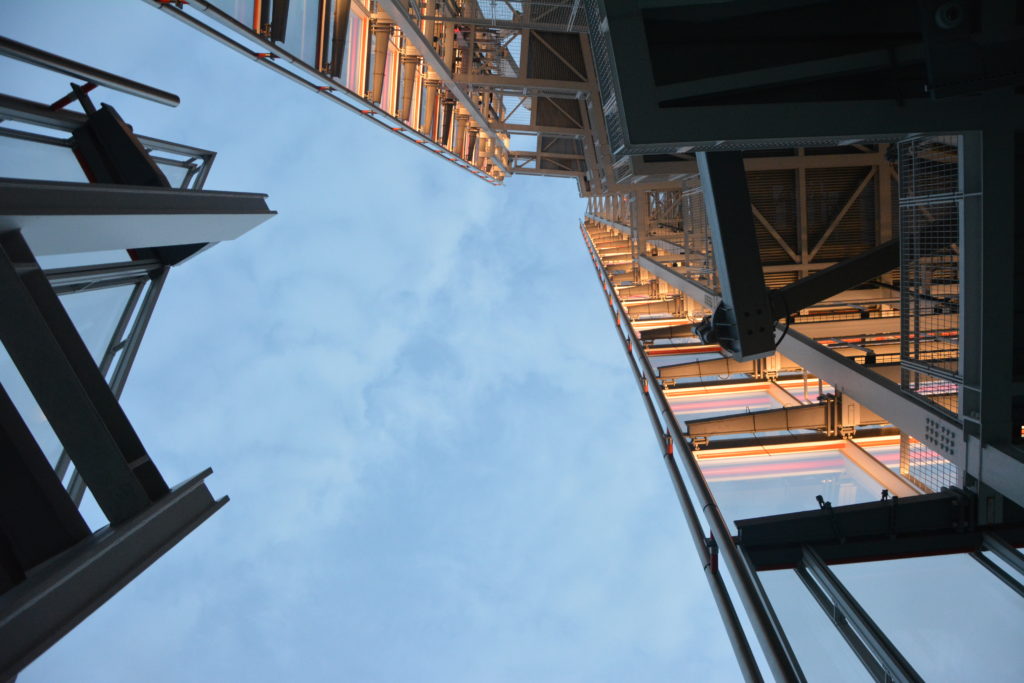 Falls are the leading cause of death at construction sites, which are already the most dangerous workplaces for Americans. Fall protection can be improved and OSHA provides guidelines on how it can be done; companies simply need to follow those steps to keep their workers safe. Drop protection, however, is often overlooked, yet thousands of workers are struck by falling objects every year.
Falls are the leading cause of death at construction sites, which are already the most dangerous workplaces for Americans. Fall protection can be improved and OSHA provides guidelines on how it can be done; companies simply need to follow those steps to keep their workers safe. Drop protection, however, is often overlooked, yet thousands of workers are struck by falling objects every year.
The Dangers of Falling at Construction Sites
There is so much construction going on in New York City, both indoors and out, that every day, thousands of people are putting their lives in danger to build, repair, and renovate our homes and businesses. The dangers of falling at a worksite include falling down from raised areas, as well as falling into pits and trenches. Landing hard on the ground can result in broken bones, internal organ injuries, spinal cord injuries, and serious damage to the head, including traumatic brain injury. The higher up you are, the worse your contact with the ground will be.
Fortunately, deaths from falls have gone down over recent years, but they still claim the most lives. There is much that can be done to avoid unnecessary construction site fatalities.
Fall Protection
Fall protection is about eliminating the risk of a fall, rather than trying to reduce injury when a fall does occur. This means that scaffolds and other raised platforms should have railings to keep workers safe. Workers at elevations above a few feet should have safety harnesses and lines that can be clipped onto safety hooks: if a fall does occur, they are caught by the harness. Scaffolds and other objects need to be constructed properly to support the weight of workers and building materials.
OSHA provides clear guidelines on fall protection. This safety plan comes down to three elements: Plan, Provide, and Train. Companies need to “plan” out fall prevention when setting up a worksite and making estimates on projects for clients. They need to then “provide” safety equipment and materials. Finally, they need to “train” all workers in how to stay safe while on the site.
The Dangers of Falling Objects at Construction Sites
Fall protection for workers is not enough, as another major danger comes from dropped objects that tumble down onto workers or pedestrians below. Just as workers need to have harnesses and lines to clip on, tools and equipment need tethers to keep them from being dropped or knocked off a raised area. The force from a falling object becomes lethal very quickly.
For example, consider an eight-pound wrench. A worker might not think twice using this tool on a scaffold or high up on a building. If this wrench is dropped from 200 feet up, which is not an unusual height for construction in the city, it would strike the ground with a force about the same as a small car slamming into a one-inch area. Even from less than half that height, the tool would be lethal to people below. A one-pound measuring tape, completely harmless on the ground, becomes a lethal projectile if dropped from several hundred feet up in the air.
Drop Protection
Drop protection means using tools that are designed for use at heights, typically through the addition of tethers to keep them from falling. Nets and similar safety gear are helpful, but not enough, because objects can still get through or around them. Workers need to be trained about the dangers of dropped objects, and taught that these accidents are preventable through proper equipment and safety practices.
Construction Companies Need to Put Safety First
Fall protection is only the first step for keeping workers safe from falls at a construction site. While worker falls account for the greatest number of fatal accidents at worksites, a dropped object strikes a worker about once every 10 minutes. That is far too high, and accounts for tens of thousands of injuries every year due to a lack of proper drop protection.
If you were injured by a falling object in New York City, our construction attorneys may be able to help get you compensation. Contact Wingate, Russotti, Shapiro, Moses & Halperin, LLP, at (212) 986- 7353 for a free consultation.